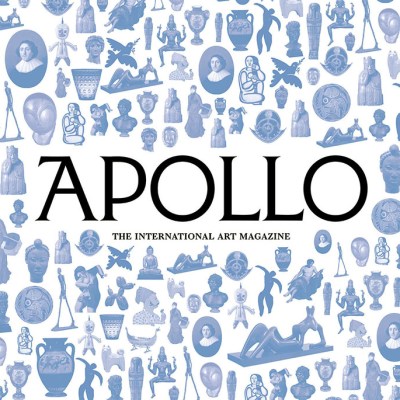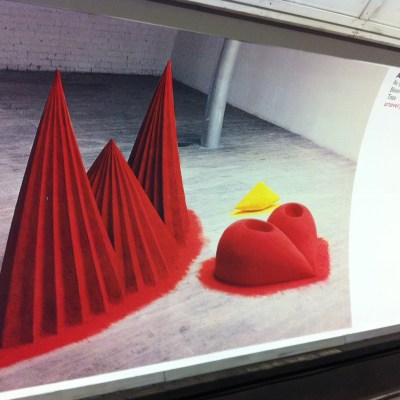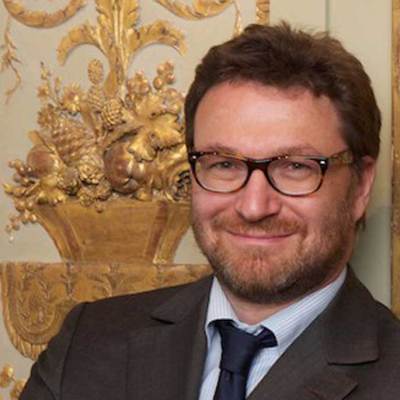Smaller museums and galleries often get overlooked in the national and international press. In a new series, Apollo asks museum directors what makes their small wonders so unique. Steven Parissien is the director of Compton Verney in Warwickshire.
Tell us a bit about the history of the gallery…
Compton Verney museum and gallery is housed in an 18th-century mansion with a modern wing, which is itself set in 120 acres of fabulous parkland of the 1770s designed by Lancelot ‘Capability’ Brown. The house was uninhabited after 1945 (the family that built it had moved out in 1921), and was derelict by the time it was rescued by the Peter Moores Foundation in 1993.
The Foundation restored the main house, built a new wing (in 1995–97, designed by award-winning architects Stanton Williams), and assembled or acquired six permanent collections, ranging from one of Europe’s finest collections of ancient Chinese bronzes to Britain’s premier collection of British Folk Art. We properly opened to the public in 2004 – so next year we celebrate our 10th birthday!
What makes this collection unique?
The word ‘unique’ is rather overused today, but it really does apply to Compton Verney. There’s nowhere in the country quite like us: a national museum and gallery offering a wide range of permanent collections and exhibitions of international standard set in a splendid, historic park.
Our beautiful rural context enables us to provide a genuinely unique visitor experience which entertains, informs, surprises and challenges but never lectures or condescends, and which is jargon-free, inclusive, gently-paced and refreshingly relaxed. Children don’t have to be dragged kicking and screaming down gallery corridors; they can let off steam by running across our meadows or playing in our artfully designed rural playground.
How does it relate to the local area?
Our visitors tend to come from within a 90-minute drive radius – i.e. from within a circle which passes through Wolverhampton, Leicester, Oxford and Cheltenham – though we do attract many groups and families from further afield. We very much promote ourselves to them as ‘the national gallery on the doorstep’: you don’t, we maintain, have to trek (expensively and laboriously) to London in order to enjoy great art and activities – and, indeed, a great day out.
How did you come to work here?
I have a background in arts and education, and was actually headhunted from an academic management role. Interestingly, many gallery directors today are being asked to possess more than just curatorial experience. Running a major museum or gallery these days is clearly not just about having artistic or aesthetic vision but also about being able to run a successful arts business.
What are the greatest challenges of running a regional museum?
There are two key challenges. Firstly, it is increasingly difficult to encourage journalists based in London to cover our exhibitions and events. Look through the pages of any serious newspaper, and the vast majority of coverage is only concerned with the capital. It’s as if the arts don’t exist outside London. The second major challenge is to persuade visitors that we are not a remote venue, but are easily accessible.
What’s your personal highlight from the collection?
It’s so difficult! Well, if I was asked to choose just two items, I’d nominate the fabulous Joshua Reynolds full-length portrait of Mrs Baldwin, dated 1782 – it’s so powerful and telling – and the late-Victorian butcher’s shop model from the Folk Art collection.
How well you do you feel you know the collection? Does it continue to surprise you?
Absolutely. At the beginning of this year (thanks to a generous grant from the DCMS/Wolfson Fund) we replanned and reinterpreted our marvellous collection of works created by, and pieces collected by, the sadly neglected mid-20th-century designer Enid Marx. Researching and revisiting the catalogue captions for the hundreds of fascinating objects in this collection reminded me just how varied, eclectic and unusual we are!
How has the museum developed during your tenure?
A lot has changed over the last four-and-a-half years, notably in the way we are funded. (The Peter Moores Foundation, which generously set us up, is now in the process of winding down.) I think we are far more attuned to our audiences, far more active in building national and regional partnerships, and far better at fundraising than we were in 2008.
We are also now paying far more attention to our unrivalled historic setting, and are planning ambitious new ways of extending and enhancing what our grounds offer. For many regional museums in this country at the moment it seems, sadly, to be a case of ‘adapt or die’. Thankfully, we have managed to adapt remarkably successfully.
And what does the future hold for Compton Verney?
More regional partnerships (including a big Shakespeare exhibition with the RSC in 2016 and the establishment of regional alliances with arts organisations in Coventry and the West Midlands); more national exhibition partnerships (with a raft of ambitious regional galleries, with major nationals such as Tate and the British Museum, and with national bodies such as the BBC); more corporate partnerships; the development of our historic parkland, which will involve contemporary arts programmes for the grounds and new, historically-inspired features for our Brownian landscape (much of this in time for the 300th anniversary of Brown’s birth, also in 2016); more commercial activity, particularly hire; and attracting larger and more diverse audiences.
Put as baldly as this, it sounds simple, doesn’t it? Ask me again how we’ve done on our 20th birthday!
Steven Parissien is the director of Compton Verney in Warwickshire.



